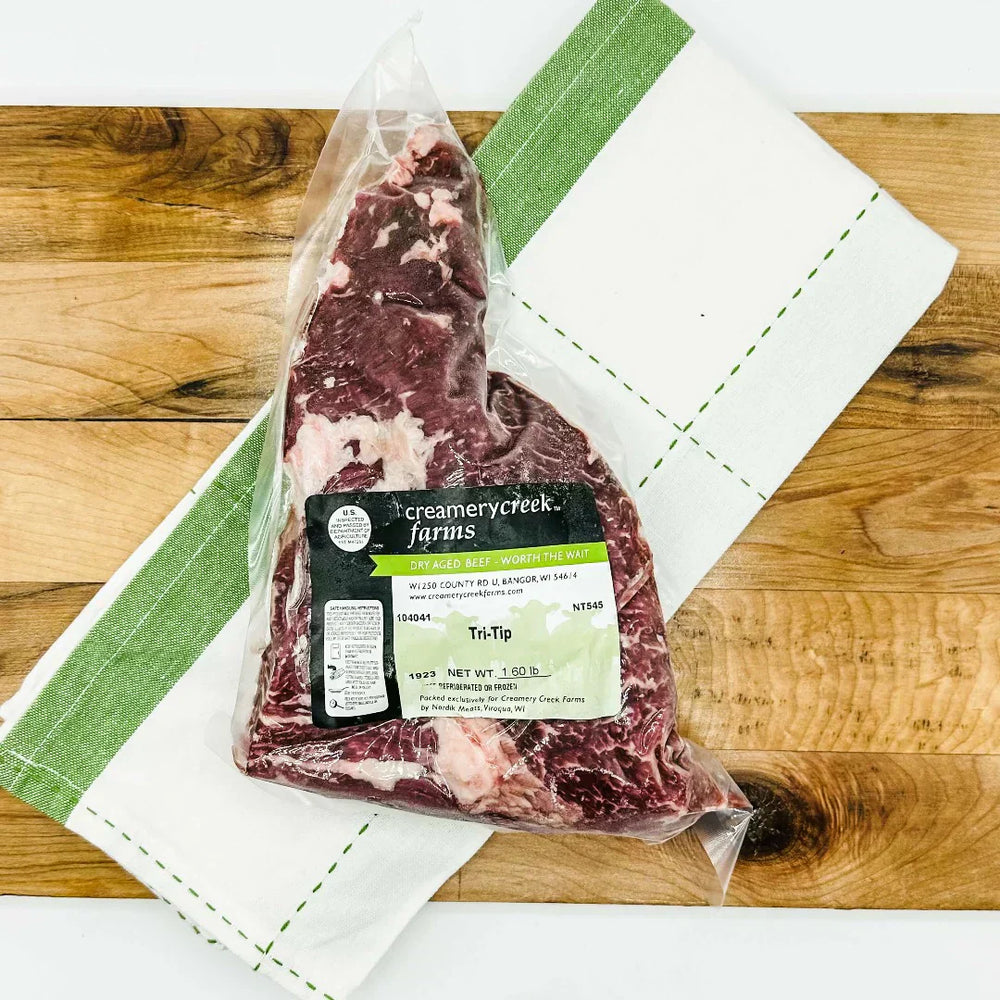
A Midwest Guide to Dry-Aged Tri-Tip
Ready to grill something unforgettable? Let’s talk about one of my favorite cuts: dry-aged tri-tip.
Tri-tip is a triangular cut from the bottom sirloin, full of rich marbling and bold flavor. It’s a West Coast favorite, but I say it’s time for the Midwest to claim it, too. Our dry-aged version adds even more depth, making it a standout choice for your next backyard dinner.
Here’s how to make it shine:
Start With the Right Trim
Trim off any thick fat cap and silver skin. Keep a little fat for flavor, but you want a clean, even surface to promote consistent cooking. Take a second to admire that deep color and marbling—this is the good stuff.
Season Simply
Dry-aged beef already packs flavor, so don’t overdo it. A generous sprinkle of salt, pepper, and garlic powder is plenty. Want to experiment? Try a marinade with olive oil, Worcestershire, soy sauce, and minced garlic. Let it sit for at least an hour—or overnight if you can.
Grill Like a Pro
Preheat the grill to medium-high.
Sear each side for about 4 minutes to lock in flavor.
Move to indirect heat and smoke or roast at 225°F until internal temp hits 110–115°F for medium-rare.
Wrap in peach paper and rest 10 minutes before slicing.
Slice It Right
Tri-tip has two grain directions. Start slicing thin from the narrow point, then turn the roast at the midpoint and continue slicing against the grain on the wider end. This ensures every bite is tender.
What to Serve With It
Sauce: Red wine reduction, chimichurri, or creamy horseradish sauce (hi, Justin!).
Sides: Roasted potatoes, grilled veggies, or a fresh seasonal salad.
Drink pairings: A bold red like Bird Day Red from Elmaro, a local IPA or stout, or a sip of smoky bourbon.
Why It Matters
Grilling a Creamery Creek dry-aged tri-tip isn’t just dinner—it’s full-circle flavor. From the soil we tend, to the feed we grow, to the care we give each animal, every step matters.
So fire up that grill, invite some folks over, and make something worth remembering.
Let me know how it goes—I’d love to hear about your tri-tip triumph. (haha!)
XO,
Louisa



Leave a comment
Also in Farm Blog
What’s the Difference Between A1 and A2 Milk
Ever wonder if Creamery Creek milk is A1 or A2? The truth is, it’s a natural blend. Our Holstein herd includes both A1A2 and A2A2 cows, and while we track it through genomic testing, we don’t separate the milk. Here’s what that means and why we care about it.
Keep reading
Behind the Scenes: How Your Order Ships from Our Farm
Ever wonder what happens after you click “Place Order”? Take a peek behind the scenes to see how your Creamery Creek box is packed, shipped, and delivered straight from our family farm with care and attention in every step.
Keep reading
What’s Really Going On With Imported Beef
There’s been a lot of talk lately about importing more beef from Argentina to “lower prices.” As a beef and dairy farmer, I wanted to share what that really means from our side of the fence. The truth is, cheaper imports don’t fix the challenges facing American farms, they just make it harder for family operations to survive. Here’s what’s really going on and why local beef still matters.
Keep reading